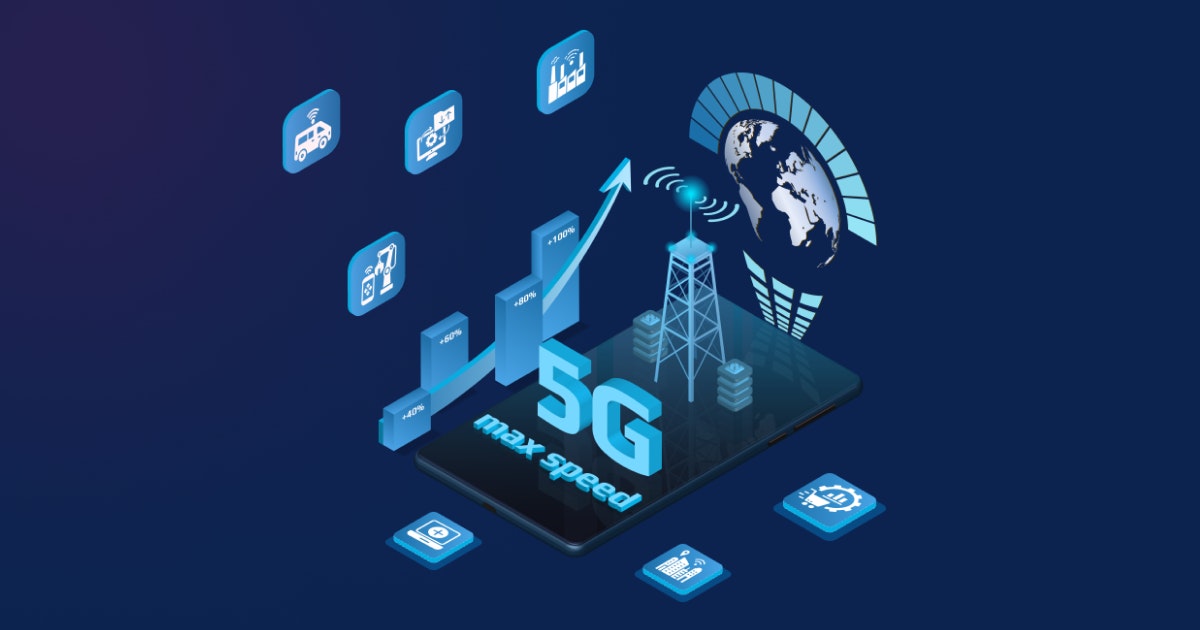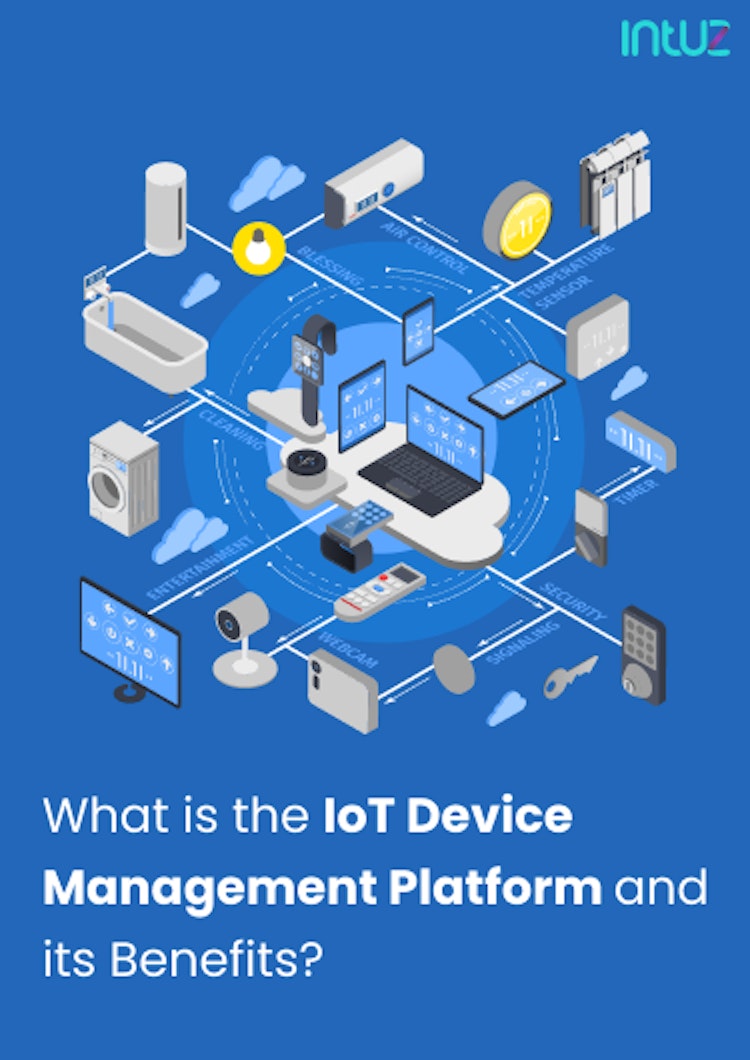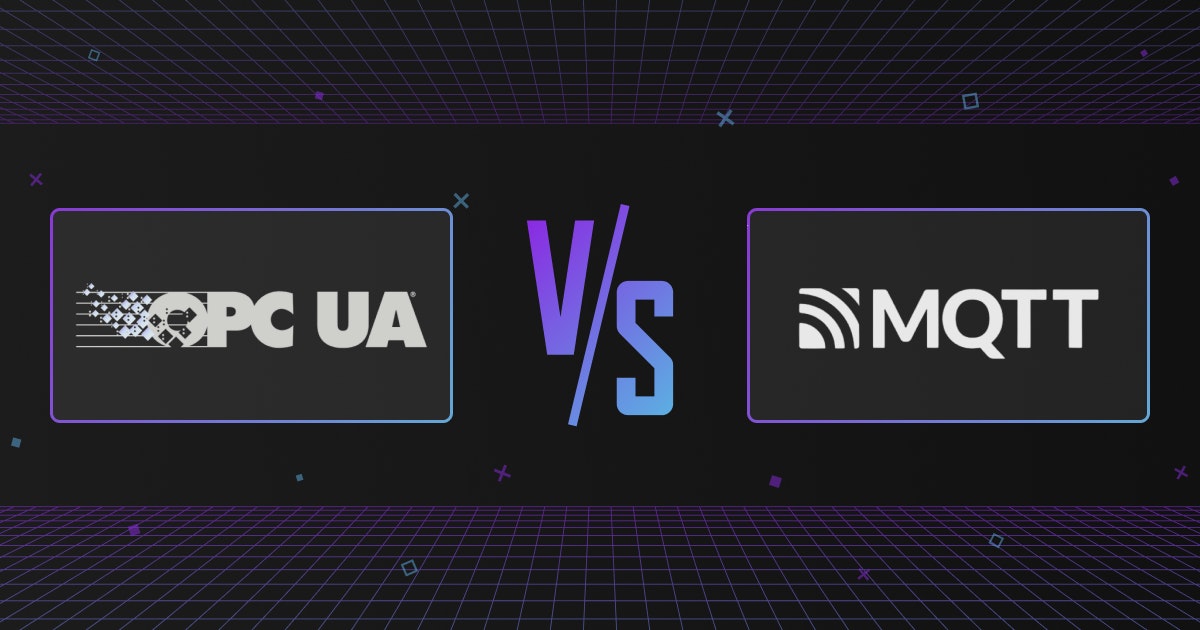Table of Content
It was in the early 1980s when the world's first Internet of Things (IoT) device was invented. A group of students at Carnegie Mellon University developed a way to get their campus Coca-Cola vending machine to report on the stock in real time through a network.
The reason they did so was selfish - it saved them a trip to the vending machine if it was out of stock and whether the cans available were cold. Smart, right? Fast forward to 2022, IoT has dramatically revolutionized every aspect of our lives.
From smart cities and utilities to smart healthcare and manufacturing to smart education and fintech, there is not one industry vertical enjoying the positives of IoT technology.
IoT and cellular technology go hand-in-hand.
As the world enters the information age's next phase, faster wireless data exchange has gained precedence thanks to Artificial Intelligence (AI), cellular communications, and data processing.
4G delivers 2 GBPS bandwidth, but 5G technology is 10X faster, enabling 20 GBPS bandwidth. This makes 5G a viable high-speed data network alternative. The world has never seen a technology as fast or reliable as the 5G wireless network technology standard.
Some of its USPs are lower latency, quick speed, and enormous capacity. Since the first mobile phone call in 1973, the telecom sector has come a long way. Here is how it has evolved:
- Briefcase-sized phones and brief exchanges between a small number of business people were characteristics of the 1G era.
- We have adapted to using more innovative cell phones, placing orders at app shops, and watching YouTube because of 4G/5G technology.
- Now that new use cases like connected vehicles, Augmented Reality (AR), and enhanced video and gaming capabilities are mainstream, 5G has modernized our personal and professional lives.
- The demand for mobile services increased in the years leading up to 2G and has not decreased.
- Pocket-sized phones, SMS functionalities, and mobile internet access characterized the 3G era.
With 5G, we can anticipate real-time monitoring, low-latency connection in rural regions, the creation of "smart cities," remote surgeries, and even telemedicine that could save lives through remote vital sign monitoring. With 30.9 billion devices to be connected by 2025, the time to shine is here for 5G technology.
5G solutions for IoT: The positive impact
5G is a game changer in the world of 5G. It enables more stable, secure, and fast connectivity advancing everything - from smart grids and self-driving vehicles to AI-enabled robots on factory floors and renewable energy. Adding to that thought, here is what the complete 5G system comprises:
1. Ultra-Reliable Low Latency Communication (URLLC)
For commercial IoT use cases and consumer applications, such as smart cities and smart homes, URLLC is essential. For instance, smart cities might deploy URLLC IoT devices to control traffic better, avoid congestion, and alert drivers of impending accidents.
With support for online gaming and AR/VR devices, URLLC capabilities will have various advantages in smart homes. A more immersive experience will be delivered through faster response times and more reliability, reducing transmission delays.
Autonomous vehicles and other machines that carry out crucial functions, such as controlling industrial equipment, require low-latency connectivity.
A 5G network will be able to optimize processing massive amounts of changing data in real time, which is impossible with the existing 2G, 3G, and 4G technologies. In conclusion, 5G technology, supported by international standards, will best serve the dependability and low latency necessary for crucial IoT applications.
2. mMTC (massive Machine Type Communications)
The simultaneous gathering of a sizable amount of tiny data packets from a wide range of devices is made possible by mMTC. The mMTC's main objective is to link a large number of devices. mMTC will leverage IoT to improve job efficiency and cut down on energy use.
3. eMBB (enhanced Mobile Broadband)
For extended internet connectivity-based applications, eMBB principally focuses on increased data rates and capacity. This technology makes access to multimedia content, services, and data possible. Hotspot connectivity, the creation of Augmented Reality (AR) or Virtual Reality (VR) media and applications, wide-area coverage, streaming video in UltraHD or 360 degrees, business automation, cloud computing, and so on are fine examples of the present mobile broadband use cases.
The Workings Of An IoT Gateway: An In-Depth Guide
Learn MoreUsing 5G technology in various IoT scenarios
As the adoption of IoT grows, the solutions will use both public and private networks to stream AR and VR content - which requires high bandwidth. Plus, 5G apps will be used for critical communications like Uncrewed Aerial Vehicles (UAVs) and factory automation.
With 5G IoT, businesses can continue sending key upgrades to networks without overloading servers or freezing functionalities. Here are the top use cases of 5G IoT applications:
1. Smart mobility and driver assistance services
5G IoT apps can enable the sharing of real-time information about traffic and road conditions among vehicles and other road users.
2. Smart manufacturing systems
Automating processes, monitoring, and implementing real-time management have become possible with 5G. The maintenance of systems can be optimized by quickly identifying flaws and offering remedies.
3. 5G IoT solutions for security
Data safekeeping is a considerable problem in IoT. 5G powers IoT security solutions to stop the loss of essential assets.
4. Remote connectivity
To study, attend business meetings or avoid breathing in polluted air, individuals do not have to spend hours traveling from place to place. They can simply plug into wherever they are required, thanks to 5G technology.
5. Facility management
Securely and reliably checking on facility conditions from anywhere. One can handle important security notifications delivered to mobile devices immediately.
6. Smart cities
By addressing and resolving all connectivity concerns, 5G is predicted to unleash the potential of IoT and serve as the driving force behind a smart city.
How various industry verticals deploy 5G
Building smart factories based on cutting-edge technologies such as automation, AI, AR, and IoT is now possible - thanks to 5G. The networking standard helps with industrial automation and robotic control.
5G IoT can deploy several critical use cases in the manufacturing sector, offering solutions for smart factories. 5G industrial technologies can be used by businesses to simulate factory processes for training purposes.
Aside from monitoring goods and asset data, they can be used for AR applications, real-time Machine-2-Machine communication, and other industrial functions. Manufacturing, along with energy and utility management, is a necessity.
The impact of 5G on IoT applications
IoT is undergoing a massive transformation with the introduction of 5G, diversifying smart objects, and creating IoT applications across all industries.
Real-time surveillance solutions, such as security cameras and connected locks, will perform better because of 5G networks' increased speed and dependability.
Industry 4.0 is accelerating, thanks to 5G, which has already been made available to businesses. This includes digitizing manufacturing processes, tracking product quality, and performing predictive maintenance.
Connected objects will address the challenges in the agricultural sector and health will be better managed, including enhancing farm animal health, reducing environmental impact through more equitable resource use, and meeting traceability requirements.
Farmers can monitor and track crops, machinery, and livestock through drones and extensive sensor networks. Homeowners can optimize power usage and streamline their favorite entertainment from anywhere. The world of private or public personal services will also soon be impacted by the new generation of cellular networks:
1. E-health
Electronic health records (EHR), remote assistance during emergencies, telemedicine, and file transfers related to health have become mainstream.
2. Smart city
This involves controlling traffic movements, reducing energy use, organizing garbage disposal, and installing charging stations for bicycles or electric vehicles.
3. Industry 4.0
The upcoming wave of industrial productivity known as Industry 4.0 is utilizing 5G and IoT for better productivity. In a self-managing system in a digital economy, the Industry 4.0 concept calls for connected manufacturing with monitored and configured components.
The fourth industrial revolution will see an additional push to adopt technologies such as 5G and IoT technologies. These will have a significant economic impact on the pace and outcome of manufacturing.
4. Smart factories
Automation, robotics, and AR will be more accessible - thanks to 5G. Its low latency rates provide real-time feedback from machine sensors, allowing for better decision-making on the factory floor.
5. Autonomous vehicles
Self-driving cars, trucks, and other vehicles will perform better with 5G technology.
Bluetooth vs. WiFi — Which Is Better For Connectivity For IoT Development?
Learn More6. IoT data management
With communication between devices, companies can create a network of connected objects that collects massive amounts of data. This enables greater traceability and transparency throughout their operations, leading to higher efficiency through more equitable resource use and meeting traceability requirements.
7. Research and Development (R&D)
Collaborative digital platforms can connect experts from different areas within the factory to work together on a project. In this environment, ideas and research can be developed faster and more effectively. This can result in introducing new processes, products, or services that are far more efficient and cost-effective.
8. Supply Chain Management (SCM)
They can use it for inventory management to track raw materials and goods - from start to finish. One can perform remote servicing, maintenance, and assembly operations with them. Sensors and control units located in equipment, machinery, and supply chains throughout industries would greatly benefit from quick and dependable real-time data transfer.
How does 5G benefit IoT?
As 5G technology becomes increasingly widespread, it presents many possibilities for how IoT systems can be revolutionized. 5G has the potential to drastically increase data rates and reduce latency, enabling faster communication between devices.
This increased speed will enable more efficient decision-making and real-time responses for smart automation applications, such as autonomous vehicles.
Additionally, 5G opens up the possibility of using larger amounts of data with greater accuracy to make better-informed decisions within smart cities and other urban environments. Let us look at the benefits of 5G for IoT:
1. Network slicing
To provide a connection better suited to particular demands, 5G enables the implementation of virtual networks (network slicing) and the creation of subnets.
As a programmable network, creating sub-networks will give specific characteristics to a portion of the network and enable prioritizing connections, such as addressing emergencies before the needs of other users.
It will use different latencies or prioritize them in the connection to the network so they can avoid being impacted by potential mobile network overloads.
2. Decreased latency
It will be possible to carry out distant tasks in real-time as 5G offers 10X lower latency than 4G. For instance, you can manage surgical procedures with the help of precision instrumentation remotely. 5G will provide complete control of the equipment. This low latency and increased sensor capabilities will make remote operations possible.
3. Increased transmission speed
Nearly 15 or 20 GBPS of speed is possible for transmissions with 5G. We can access data, programs, and remote applications without any delays. By utilizing the cloud more frequently, all gadgets (such as smartphones, computers, and other electronic devices) will rely less on internal memory and data accumulation. Additionally, since computing can be done on the cloud, you will not require the installation of processors.
4. Expanded number of connected devices
With 5G, there will be millions of connected devices per square kilometer, a significant increase in the number of IoT devices that can connect to the network. With instant connections to the internet, all connected devices will be able to communicate with one another in real time.
Over to you
Without a doubt - the society we live in will be very efficient. Smart cities will live up to their name; businesses can boost their efficiency, deliver greater value and reduce fewer resources. Individuals can have a more modern and personalized way of living.
And 5G is the perfect technology to make all that possible! If you want to dip your toes in IoT, you have come to the right place. Our scalable IoT application development services are geared towards fulfilling your business and customer requirements. Get started with us here.







